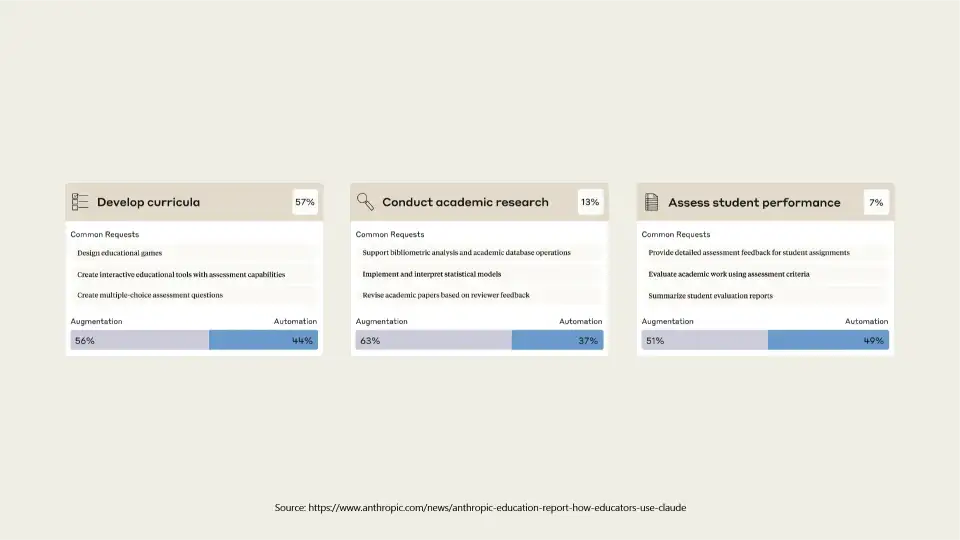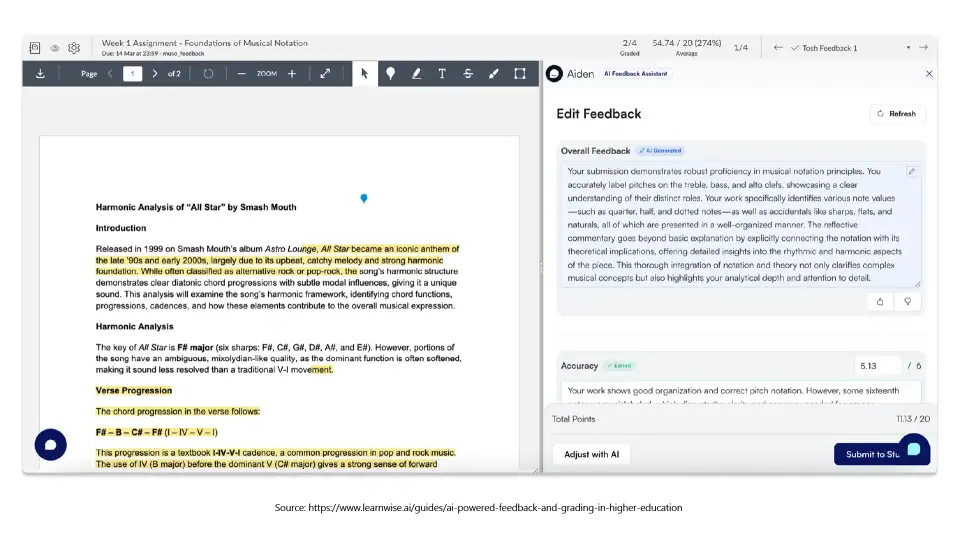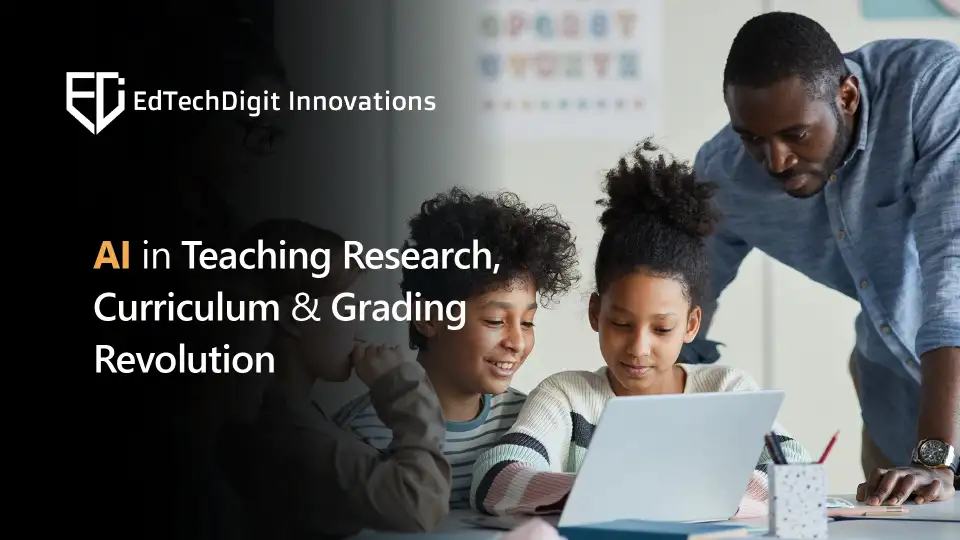The rapid development in the field of AI and generative AI, especially in large language models like ChatGPT and Claude, has quite a deep impact on the role of educators. Teachers and professors are increasingly using AI tools not just for pedagogy for students, but to power their other tasks as well, such as research, curriculum design, grading, support, etc.
AI is an incredible technology transforming education; however, it raises pedagogical, ethical, and practical issues as well. Let’s understand in detail how educators and students are using AI for a variety of purposes and how it actually benefits them.
According to an analysis of 74,000 educator conversations with Claude.ai, the top three uses of AI in education are developing curricula (57%), conducting academic research (13%), and assessing student performance (7%).

AI in Educator Research
One of the perhaps less obvious but growing uses of AI among teachers and professors is doing academic or pedagogical research. These days, teachers actively use AI tools in research for the following things:
- Literature reviews
- Generate research question ideas
- Analyze large textual datasets
- Draft proposals or manuscripts
For instance, Georgia State University professor Sue Kasun used Gemini for brainstorming assignment ideas for a course and actively leveraged AI for ideation. Also, data collected by Anthropic mentioned that nearly 13% of AI use was to support academic research. AI has the power to scan huge volumes of data rapidly and summarize key findings instantly. Moreover, it can detect connections across studies and even propose new angles by combining what would otherwise look unrelated ideas.
This offers the following benefits:
- Saves time
- Fuels ideation
- Assists with writing
However, these benefits also come with a few challenges that must be taken care of, such as:
- The AI summaries and research simplification can be questionable
- AI may not be able to properly distinguish subtle theories in specialized fields
- Relying solely on AI can diminish educators’ own and original thinking capabilities
This is why it is recommended that educators treat AI as an ‘assistant’ instead of a replacement. They should use AI’s output as a draft or inspiration and not a final copy.
AI in Curriculum and Course Design
Another important application of AI in education is planning, designing, and developing an effective curriculum. Teachers can use AI to generate course outlines, module plans, learning activities, prompts, project ideas, and so on.
As per Anthropic, developing curricula and study materials is the top use case of AI, with nearly 57% teachers using Claude for the same. With advanced AI tools, educators can generate just about anything, from course to assignment ideas.
Additionally, frameworks like SELAR are becoming popular that help teachers integrate generative AI meaningfully in their daily workflows and enhance student engagement or personalize content.
Another advantage is, AI can help develop curricula for various needs, like different variants of assignments for students at different levels.
Risks and Design Tensions
Educators must consider a few risks associated with using AI for curriculum design, such as:
- AI-generated curricula might be too ‘safe’ or general, instead of diving deep and without contextual innovation
- Though AI can generate engaging activities, it may not have effective learning outcomes
- There are chances that AI can cite examples with bias or discrimination if not checked carefully
This requires educators to use AI for brainstorming. They give prompts, review the suggestions, and iterate for a final human-shaped design.
AI in Grading and Feedback
Perhaps the most discussed and controversial use of AI in education is assessment and grading. AI-powered automated grading systems can be useful, but they can be risky as well.
Let’s understand this in detail.
For a long time, traditional automated grading systems like auto-graders have been used for tasks like multiple choice, code correctness, and short answers. However, the more advanced AI and NLP-powered systems can also assess open-ended writing tasks, including essays, articles, or theories, and generate feedback on content, structure, grammar, etc.

For example, there are platforms like Learn Wise that offer AI-powered feedback and grading and help instructors review or adjust AI suggestions. Anthropic’s internal analysis reports that about 7% of faculty use AI for grading, and 50% of these were fully handed over to the AI.
Pros:
- Faster assessment
- Consistency
- Detailed student feedback
- Reduce workload for the teacher
Cons:
- Bias and transparency
- Student trust
- Misgrading
Because of these risks, there should always be a human in the loop. Because AI can generate grades and feedback, but a teacher’s review is essential to maintain student trust and for a fair assessment.
Final Thoughts
AI has been a huge transforming force across industries, and the education sector is not an exception. AI is now used as an efficient assistant for research, curriculum design, content personalization, assessment, grading, and feedback. But educators need to stand, the true value of using AI in education is in collaboration between technology and teachers, and not using AI as their replacement. With proper integration, planning, and implementation, AI can free up teachers’ time from repetitive tasks and focus on more creative, critical thinking, and mentorship tasks.

